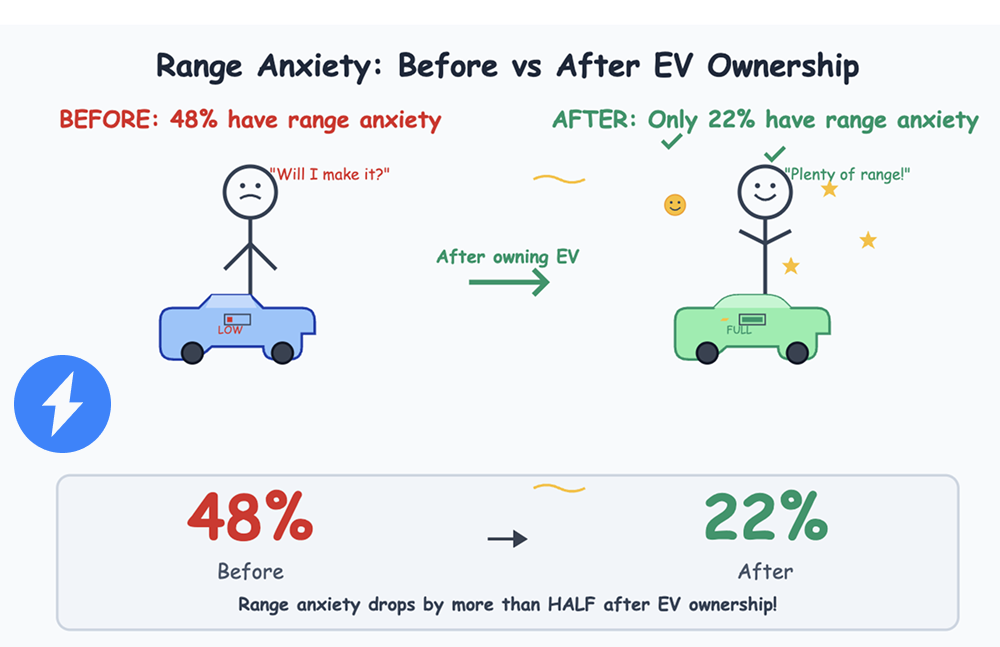Ford’s August 11 announcement about its forthcoming EV plans was news for a lot of reasons. A big one was that the new truck will offer a comparatively small battery, especially by US standards. Reports tease a battery nearly half the size of that in their Ford F-150 Lightning, or around 50 kWh. That’s around 30% less than the current industry average, which is around 72 kWh, and almost half the 2025 model year average, which is 93 kWh.
A quick calculation based on current engineering principles puts the range at or under 200 miles – also far below the industry average of 293 miles.
Will it work?
The data says yes. Data from over 40,000 EVs shows EV owners in the US are leaving a lot of the range they pay for, on the table.
.png)
Although electric cars with more range do drive a bit further each day, on average,, at least 80% of range goes unused.
The Range Utilization Reality:
Electric cars with an EPA-rated range of 350-375 miles average 40.9 miles per day, while those with an EPA range of 100-125 miles only average 22.2 miles daily. What does this look like in terms of utilization?
- 75-100 mile EVs: 22.8% of range used daily
- 300-325 mile EVs: 12.0% of range used daily
- 350-375 mile EVs: 11.3% of range used daily
- 375-400 mile EVs: 7.9% of range used daily
.png)
The Psychological Safety Blanket
The weighted average across all EVs is just 12.6% daily utilization. Even the most range-rich owners (those who bought 350+ mile EVs) still leave 88%+ of their range unused most days.
Why is this?
Perhaps extra range is a psychological safety blanket for new EV owners, who still report range anxiety as the largest concern before buying an EV. However, 2025 data from Plug In America shows that pre-purchase range anxiety fell 21.7% from 2024, and that range anxiety drops from 48% to 22% after owning an EV. A study from Recurrent also shows that range anxiety decreases the longer you own and drive an EV.

This suggests the industry's "range arms race" is creating expensive solutions to problems that don't exist, or exist for only a moment before people really experience EV ownership. A 200-mile EV could handle 99% of these daily usage patterns, yet manufacturers are adding cost and weight for range that often goes unused.
Of course, there are drivers who have longer daily drives, and plan to make frequent longer drives. And there should be options for them! But there should also be cost effective, entry models for people who can’t afford more, or just want to dip their toes into EV ownership. Hopefully Ford’s plans help meet these needs.

-p-500.png)



